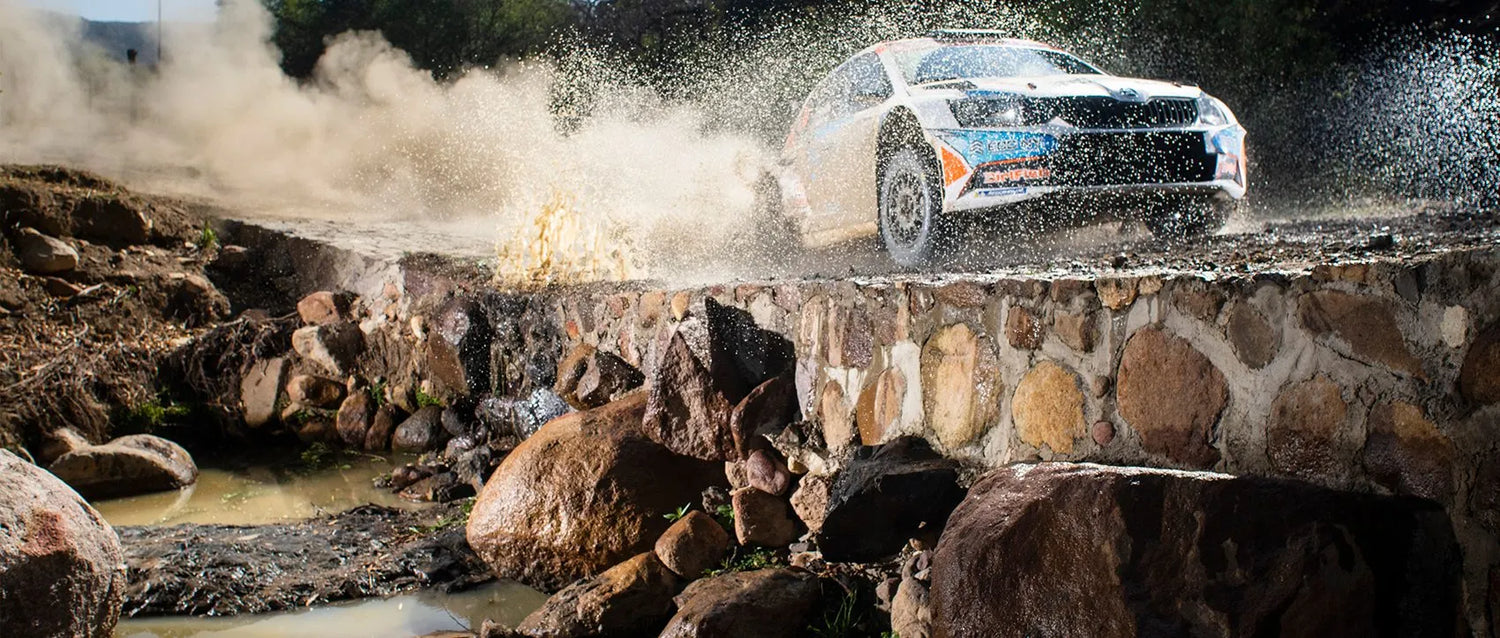Rally Mexico was the last round of this year’s World Rally Championship to be run in mid-March, before the Covid-19 pandemic shut down motorsport around the world. In fact, the Mexican event was even shortened by a day, so that teams could return to their European bases before travel restrictions came into place. Fifty years ago, an altogether different type of rally ended in Mexico.
The London-Mexico World Cup Rally concluded after a journey of 25,700 kilometres, covering three continents and 25 countries in the space of just under a month, including one week at sea travelling from Lisbon to Rio de Janeiro. The event was staged as a celebration of the football World Cup, starting at Wembley Stadium, the site of England’s historic win in the 1966 World Cup and ending at the venue for the 1970 edition of the battle for the Jules Rimet trophy.
There was something of a fad for these very long rallies and although they can trace their origins back to the start of the 20th century, this newer type of event first evolved from the 1968 London to Sydney Marathon, which was won by a three man crew of international standard British rally drivers, Andrew Cowan, who would later run Mitsubishi’s World Rally Championship programme, Colin Malkin and Brian Coyle, driving a Hillman Hunter. The Marathon was sponsored by the Daily Express and Daily Telegraph newspapers, at a time when the British economy was struggling, with the idea that it would be a showcase for the country’s engineering skills and boost export sales of cars in countries along the route. In this, it was reasonably successful, but it also led to a whole host of dubious “motoring accessories” finding their way onto the market: why would a European city dweller need to fit his family saloon car with “roo bars”, intended to prevent damage from jaywalking kangaroos in Australia?
The London-Mexico was part promotional event, with amateur competitors taking part in such diverse machinery as a VW Beetle and a Rolls Royce, part serious rally competition featuring full on professional factory rally teams from Ford, Moskvitch (yes really!) British Leyland and Citroen. The cream of the world’s rally drivers took part, including the usually strong Scandinavian contingent of Rauno Aaltonen, Timo Makinen and Hannu Mikkola, as well as Brits, Roger Clark, Andrew Cowan and Tony Fall, who would go on to head up Opel’s rally department. Fall’s co-driver was the centre of much press attention on the event as he shared the driving with Tottenham Hotspur and England footballing legend Jimmy Greaves. The pair would go on to finish a surprising sixth overall.

After crossing from England to France, the one hundred starters followed the route east through to Germany, Austria, Hungary, what is now the Czech Republic and Serbia and Bulgaria, before heading West again through Italy, France and Spain before arriving in Lisbon where the cars and crew were loaded onto a ship to Rio de Janeiro. A week on board brought some welcome respite to the drivers and their back-up crews before the toughest part of the event through inhospitable terrain on terrible roads, including a section through the Andes where the professional crews even resorted to oxygen equipment to deal with the altitude and still be able to drive at speed. The event was run in similar fashion to a normal rally, with special stages, or “primes” as they were called, to decide the actual results, although given the nature of the terrain, the link sections from one stage to the next were often just as tough and treacherous as the timed sections.
Film footage of the event shows not only how tough was the event, but how much times have changed, with Jimmy Greaves doing a mid-rally TV interview, having changed into a blazer and tie! Later in the event, when the cars were in Parc Ferme, a Ford mechanic is seen shouting instructions at Greaves, telling him how to change the shock absorbers on his car, as the crew were not allowed to intervene!

Only 23 of the 100 starters made it to the finish in the Aztec Stadium in Mexico City, where Formula 1 World Champion Graham Hill was brought in to add some racing glamour to the event. The winner, finishing one and a half hours ahead of the second placed crew, was one of the sport’s all time greats, at that point still in the early stages of his career, Hannu Mikkola, ably abetted by his regular co-driver Gunnar Palm.
These days, events like the Paris-Dakar have made endurance rallies seem almost common place and there is even an FIA sanctioned World Cup for Cross Country Rallies, but those original marathons, like the London to Mexico still have that extra little magic about them.
Images courtesy:
Motorsport Images / Red Bull Content Pool / Historic Marathon Rally Group / Brian Englefield / Jaanus Ree














































